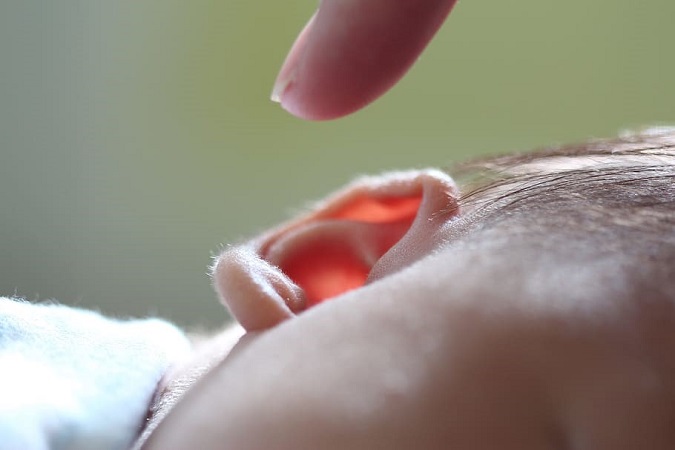Surprising Facts About Hearing Loss You Should Know

The World Health Organization (WHO) reports that over 5% of the world’s population have disabling hearing; 34 million of these people are children. Unless action is taken, there will be nearly 630 million people with disabling hearing loss by 2030.
Currently, over 1.5 billion people live with hearing loss. It is anticipated that this number could rise to 2.5 billion by 2050, which means over 700 million people globally would need hearing rehabilitation at that time.
There are many factors that can lead to hearing loss, and many of them are fairly obvious, such as extremely loud noises, head trauma, and genetics can all play a role in causing hearing loss. But there are types of and other facts about hearing loss that are less widely known by the public.
Main Types of Hearing Loss
While hearing loss essentially all has the same end result, there are mainly two specific types of hearing loss you should be aware of.
The inner ear is a complex system, relying on a series of small bones, cartilage, as well as a series of nerves and other tissues to conduct vibrations through the ear canal and into the cochlea where the vibrations trigger the auditory nerves.
Depending on where the problem lies, treatment for hearing loss varies from person to person.
I. Conductive Hearing Loss
Conductive hearing loss is caused by problems with sound conducting properly through the outer ear and auditory canal. This can include damage to the external auditory canal, eardrum, or bones of the inner ear (stapes, malleus and incus).
This type of damage can usually be treated through medications or surgery, though if it isn't repairable, people suffering from this type of hearing loss do very well using hearing aids.
II. Sensorineural Hearing Loss
Sensorineural hearing loss is hearing loss caused by a problem with the neural pathways that translate the vibrations from the inner ear into nervous signals to interpret sound. This could be due to damage to the cochlea, the auditory nerves, or even nerve damage to parts of the nervous system leading to the brain or even damage to the brain itself.
This type of hearing loss is most commonly treated through cochlear implants and other medical management depending on the severity.
While hearing aids can sometimes help with this type of hearing loss, it really depends on what part of the system isn't functioning properly.

Hearing Loss Facts and Stats You Should Know
Now, here are the seven most surprising facts about hearing loss, and how knowing these tidbits might help you protect your hearing.
60% of Hearing Loss in Children Under 15 is Attributed to Preventable Causes
Children are the last demographic you'd normally think of when discussing the topic of hearing loss and with good reason. While the cause of hearing loss that most likely comes to mind is listening to loud music and causing noise damage to the auditory canals, there are other preventable causes that can affect a child's hearing before they are even born.
Congenital Cytomegalovirus (or CMT for short) is a virus that pregnant mothers can contract that attacks the infant in the womb. The disease can be contracted through bodily fluids, but is easily treatable with prescription drugs.
Unfortunately, either due to being unable to afford the proper healthcare to deal with the illness or simply being unaware of the condition, many infants are born with complications due to CMT, one of the more prominent ones being a loss of hearing, according to WHO.

With Early Identification and Services, Children with Hearing Loss Can Develop Communication Skills at The Same Rate as Their Peers
While hearing loss in children isn't as prevalent as with other demographics, it still occurs in about 3 million children across the US, according to the Centre for Hearing and Communication, with 1.3 million of them being under the age of three.
If caught early though, these children can still have a fighting chance to learn and develop their speech and language skills alongside their non-impaired peers. With the help of technology as well as a stable support system and doctors, they will be able to learn to communicate and understand without their hearing impairment being a major hurdle.
It's also important to catch issues with hearing early, as children with hearing problems can miss as much as 50% of classroom discussions, even if it is only mild hearing loss, according to the National Institute on Deafness and Other Communication Disorders.
15 Million People in The US Avoid Seeking Help for Their Hearing Loss
None of us want to admit that we may have a problem, especially if it's something that we can just live with. This applies heavily to hearing loss, as people tend to attribute hearing loss and the problems caused by it due to miscommunication or misunderstanding rather than an inability to hear properly, according to industry experts and sources such as the WHO report.
With most adults waiting at least 7 years before seeking any kind of treatment for their hearing loss, it's more than understandable why the age demographic for most people suffering from hearing loss is the older generations.
While Loud-Noise Damage is Preventable, It Is Permanent
Loud noise damage is the most common cause of hearing loss, and it is almost completely preventable. Many people might attribute the fact they're able to hear better once they are out of the noisy environment to their hearing improving slightly, but noise damage is permanent, according to the Hearing Loss Association of America.
It is important to protect your ears from noise damage, as even regular prolonged exposure to noisy environments like subway trains can cause permanent damage over time.
If you are concerned about hearing loss and work in noisy environments, bring earplugs or noise-cancelling headphones to help dampen the noise.

Photo: cdph.ca.gov
50 Million People in the US Suffer from Tinnitus
Tinnitus is a condition commonly associated with hearing loss. While tinnitus isn't a condition itself, it is actually a symptom of other underlying conditions that lead to hearing loss.
Tinnitus is essentially the perception of noise, commonly a ringing in the ears, which isn't actually caused externally. There are two types of tinnitus:
- Subjective tinnitus results in a ringing or buzzing sound that only you can hear.
- Objective tinnitus is a buzzing or ringing that your doctor can hear while checking your hearing with a medical device.
They both have different causes as well as different treatments.
Unaddressed Hearing Loss Poses an Annual Global Cost of 750 Billion Dollars
Hearing loss can cause issues not just for the person suffering from it, but also those around them. Miscommunications are bound to happen in day to day life, but are far more common for people with hearing problems.
Considering only 17% of people with hearing problems actually use hearing aids or get treatment for their hearing loss, these miscommunications and other issues can have a devastating effect on corporate operations or just effective communication on a global scale if you consider that 466 million people worldwide have disabling hearing loss.
That basically means that only 79 million out of those 466 million people are actually treating their hearing loss.
If you are suffering from symptoms of hearing loss or are concerned about your hearing, don't wait any longer. Make an appointment to see your doctor and have your hearing checked.



![9 Tips for Managing Your Online Writing Projects Efficiently [node:titile]](/sites/default/files/styles/thumbnail_rectangle/public/open-book-laptop-online-writing-tips.jpeg?itok=iq4PIT7b)










![9 Tips for Managing Your Online Writing Projects Efficiently [node:titile]](/sites/default/files/styles/video_thumbnail_bottom/public/open-book-laptop-online-writing-tips.jpeg?itok=rI4zR3a-)







